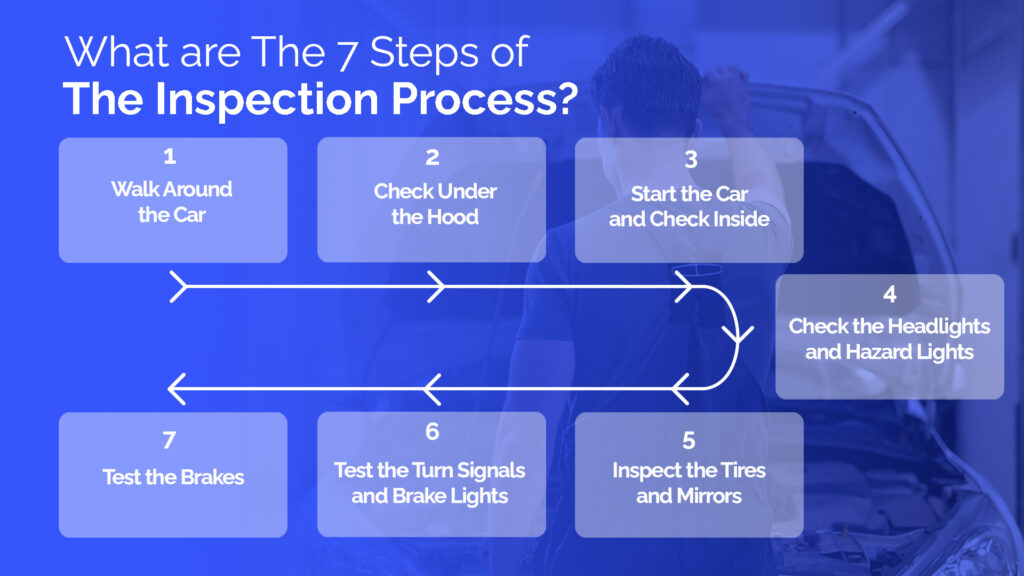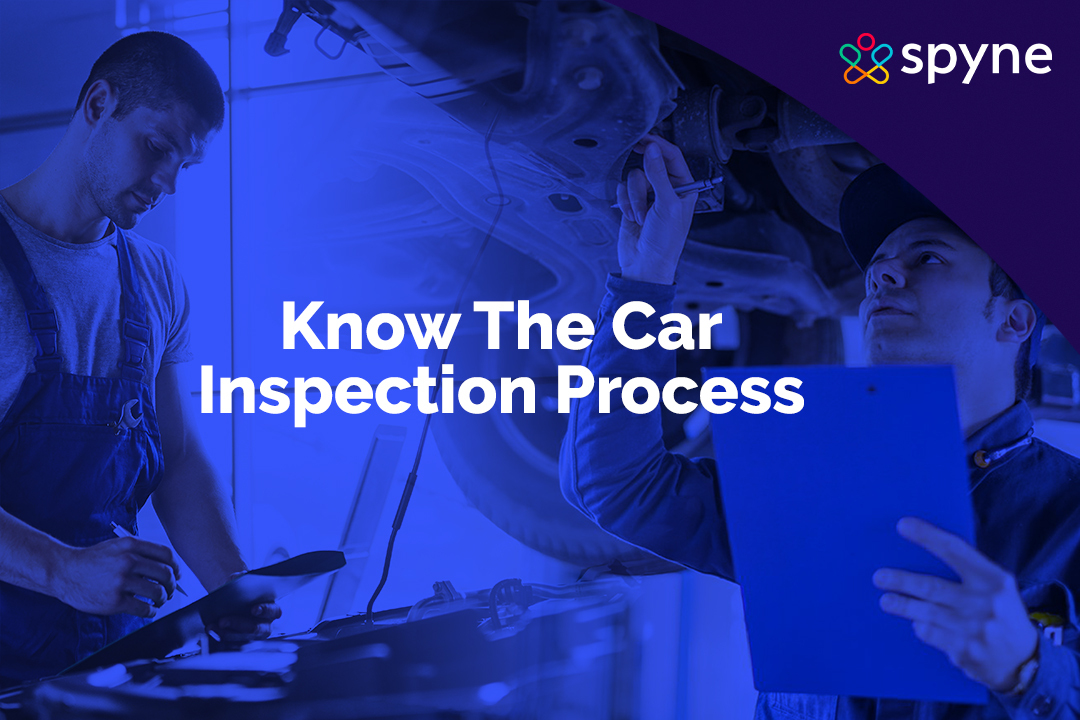Car inspections are an essential part of keeping your vehicle safe and reliable. They help catch potential problems early, saving you time and money on costly repairs. Whether it’s a routine check or preparing for a long journey, inspections ensure your car stays in top shape. In this blog, we’ll explore why inspections are important, what’s involved in the car inspection process, how long they take, and ways to make them quicker. Read on to learn more about the car inspection procedure.
The Importance of a Car Inspection
Getting your car inspected regularly is one of the easiest ways to keep it safe and running smoothly. The car inspection process helps catch small issues like worn-out brakes or low tire pressure, before they turn into bigger, more expensive problems. A good vehicle inspection procedure also keeps you from dealing with sudden breakdowns that could leave you stranded. A well-maintained car lasts longer and performs better, which helps you save you money in the long run.
A proper car inspection procedure includes checking the tires, brakes, lights, and fluid levels to make sure everything is working as it should. These car inspection steps help prevent accidents and keep you, your passengers, and others on the road safe. If you own a business with company vehicles, regular car examinations ensure they stay in good shape and meet safety standards. Taking a little time for an inspection can give you peace of mind and help you avoid unexpected repairs.

What are The 7 Steps of The Inspection Process?
The car inspection process keeps your vehicle safe and running well. Good vehicle inspection systems help keep track of these checks. You can follow these seven car inspection steps to make sure your car is road-ready:

Step 1: Walk Around the Car
Start by looking at the car from the outside. Check for dents, scratches, or anything unusual. Look underneath for leaks and see if the car is sitting evenly. Make sure nothing is blocking the car, like objects or people. This quick car examination helps spot problems before driving.
Step 2: Check Under the Hood
Open the hood and inspect the engine area. Check the oil, coolant, and windshield washer fluid. Look at the battery and make sure the wires are connected properly. Check the belts for cracks. If you see any leaks or damaged parts, get them fixed before driving.
Step 3: Start the Car and Check Inside
Turn on the car and listen for any unusual noises. Look at the dashboard to make sure there are no warning lights. Check the fuel gauge, temperature gauge, and battery indicator. Test the steering, brakes, horn, and windshield wipers. Also, make sure the seatbelt is working properly. This part of the vehicle inspection procedure ensures everything inside the car is working fine.
Step 4: Check the Headlights and Hazard Lights
Turn on the headlights and hazard lights. Walk around the car to see if all lights are working. If any light is dim or not turning on, it may need to be replaced.
Step 5: Inspect the Tires and Mirrors
Check all four tires for proper air pressure and any signs of damage. Look at the side mirrors and rearview mirror to make sure they are clean and properly adjusted. A good vehicle inspection process includes making sure you can see clearly while driving.
Step 6: Test the Turn Signals and Brake Lights
Turn on the left and right turn signals one by one. Step outside and check if they are blinking correctly. Also, press the brake pedal to see if the brake lights work. This step in the car inspection procedure ensures other drivers can see your signals on the road.
Step 7: Test the Brakes
Slowly move the car forward and press the brakes to make sure they work properly. Also, check the parking brake by engaging it and trying to move the car. If the car does not stay in place, the parking brake might need fixing.
After completing these steps, a vehicle inspection report can confirm that your car is in good condition and ready for the road.
What Does a Car Inspection Include?
A car inspection is a step-by-step check of a vehicle to ensure it is safe and working properly. This vehicle inspection procedure helps find problems early and keeps the car running smoothly:
1. Exterior Inspection
The car examination starts with checking the outside of the car to make sure everything is in good shape. The inspector looks at:
- Body and Paint: Checking for scratches, dents, rust, or signs of previous accidents. Large rust spots can weaken the car’s structure.
- Lights and Reflectors: Headlights, brake lights, turn signals, and hazard lights must be working properly to ensure safe driving.
- Windshield and Wipers: The windshield should not have large cracks, and the wipers should work well to clear rain and dirt.
- Mirrors: Side and rearview mirrors should be properly aligned and free from cracks to give the driver a clear view.
2. Interior Inspection
The next step in the car inspection procedure is checking the interior, focusing on safety features and comfort. This includes:
- Seat Belts: All seat belts should latch properly and retract smoothly for passenger safety.
- Steering Wheel and Column: The steering system should be easy to turn without any unusual noises.
- Dashboard Warning Lights: If warning lights like the check engine or oil pressure light are on, the car may need repairs before passing inspection.
- Airbags: Airbags should be in proper working condition, with no warning lights indicating a malfunction.
3. Mechanical Inspection
This part of the vehicle inspection procedure ensures all key systems are working properly. The inspector will check:
- Engine Condition: Looking for oil leaks, unusual noises, and excessive smoke from the exhaust.
- Brakes and Brake Fluid: The brake system, including pads, rotors, and fluid levels, must be in good condition to ensure safe stopping.
- Fluids and Battery: Engine oil, coolant, and brake fluid should be at the right levels, and the battery should be securely connected.
- Exhaust and Emissions: Some states require emissions tests to check for leaks and ensure the vehicle meets environmental standards.
4. Suspension and Steering Check
A good suspension and steering system helps the car drive smoothly and safely. The inspector will check:
- Shocks and Struts: These should not be leaking or excessively worn out, as they absorb road bumps.
- Steering Response: The car should turn easily and not pull to one side.
- Axles and Frame: Checking for damage that could make the car unsafe to drive.
5. Tires and Wheels Inspection
Tires and wheels are important for safety. As part of the car inspection process, the inspector will check:
- Tire Tread Depth: Tires should have enough tread for good road grip. Worn-out tires can be dangerous, especially in wet conditions.
- Tire Condition: Checking for cracks, bulges, or punctures that could lead to a blowout.
- Wheel Alignment: Poor alignment can cause uneven tire wear and make steering more difficult.
6. Document Review
The vehicle inspection process also includes checking important documents to confirm the car’s history and ownership details. These include:
- Title and Registration: The car must have a valid registration and no legal disputes or accident history.
- Maintenance Records: Keeping track of regular maintenance helps prove the car is well taken care of and more likely to pass inspection.
- Recalls and Repairs: Any open recalls should be addressed before the inspection, as some states require them to be fixed before renewing registration.
How Long Does a Car Inspection Process Typically Take?
A car inspection can take 30 minutes to several hours, depending on the type of inspection, the condition of the vehicle, and any issues found. Most basic car inspections are completed in less than an hour. However, filling out the paperwork may take some time, so plan on spending about an hour or a bit more at the shop. If the mechanic discovers a potential problem with your vehicle, it may take more time to identify and repair the issue.
Here are some factors that can affect how long a car inspection process takes:
1. Appointments and Scheduling
Scheduling an appointment can sometimes take time. Body shops with limited resources might require you to wait several days or even weeks to get an inspection appointment, depending on their availability and your schedule.
2. Location of the Vehicle and Inspection Site
If your car is in a remote area, the inspection could take longer. You can either bring your car to a shop for inspection, or an inspector can come to you. If the vehicle is far away, the inspector may need extra time to travel, and sometimes even fly to another location, which adds to the overall inspection time.
3. Workflow of the Body Shop
The speed of the inspection process also depends on the efficiency of the body shop. While the physical inspection might only take a couple of hours, processing the results can take a few days to a few weeks, depending on how busy the shop is and how many staff members are available to handle the paperwork.
4. The Inspector’s Experience
The inspector’s experience plays a big role in how long the inspection will take. A skilled inspector can quickly assess your car, while a less experienced one might take longer. If the inspector is busy with other tasks, you might have to wait for them to become available.
How Can the Car Inspection Process be Made Faster?
New technologies and improvements to the traditional process are key to speeding up the car inspection process. For example, automation and digital tools can greatly reduce the time needed for an inspection. These technologies help streamline tasks, eliminate unnecessary steps, and make the entire process more efficient.
Digitizing the inspection process, for instance, helps by allowing everything to be done online. Scheduling can be done digitally, and inspectors can keep records electronically, making it quicker and easier to handle. This reduces the time spent on paperwork and ensures data is processed more efficiently.
Automation is another major factor in speeding up car inspections. With AI and computer vision, remote vehicle inspections can be done. This means car owners don’t have to take their cars to a physical location or wait for an appointment. Instead, they can capture the details of their vehicle, and a report can be generated almost instantly, detailing any issues and suggesting repairs.
How Can Spyne Help with Car Inspections?
Spyne makes car inspections faster, easier, and more accurate. Here’s how Spyne can help:
Quick and Accurate Vehicle Reports
Spyne’s AI tool quickly checks your car for any issues like dents, scratches, or worn tires and gives you a detailed report right away. This helps both buyers and sellers make quick, informed decisions.
Building Trust with Clear Inspections
Spyne’s reports are clear and trustworthy, which helps build confidence between businesses and their customers. This kind of transparency leads to better relationships and keeps customers coming back.
360-Degree Scanning for a Full Picture
With Spyne’s 360-degree scanning, every part of the car gets a close look. This ensures that nothing is missed, giving a complete visual record of the car’s condition, as captured in the inspection paper for car.
Access to Service History and Past Reports
Spyne keeps track of all inspection and service records, making it easy to check previous reports. This helps with understanding the car’s condition and makes decisions about future repairs easier.
Real-Time Photos and Less Mistakes
Spyne lets you take high-quality photos during the inspection, giving you a clear view of the car’s condition. With AI handling the process, there’s less chance for mistakes, making the inspection more reliable. These accurate photos can be included in a used car inspection form, helping buyers see exactly what they’re getting.
Commercial Vehicle Inspection Checklist
For businesses dealing with commercial vehicles, Spyne’s technology can help ensure that every vehicle undergoes a thorough inspection with a commercial vehicle inspection checklist, covering all essential aspects like engine, tires, brakes, and body condition.
Conclusion
While traditional car inspections can take days or even weeks, Spyne’s AI-powered digital inspections have made the process much faster, often taking just a few minutes. With advanced AI technology, these inspections help ensure vehicles stay safe on the road with accurate, real-time reports. Even if not required by law, regular inspections are still important. Take advantage of National Car Care months in April and October to keep your car in top shape, with all necessary inspection certificates and inspection paper for cars ready for the road ahead.



























